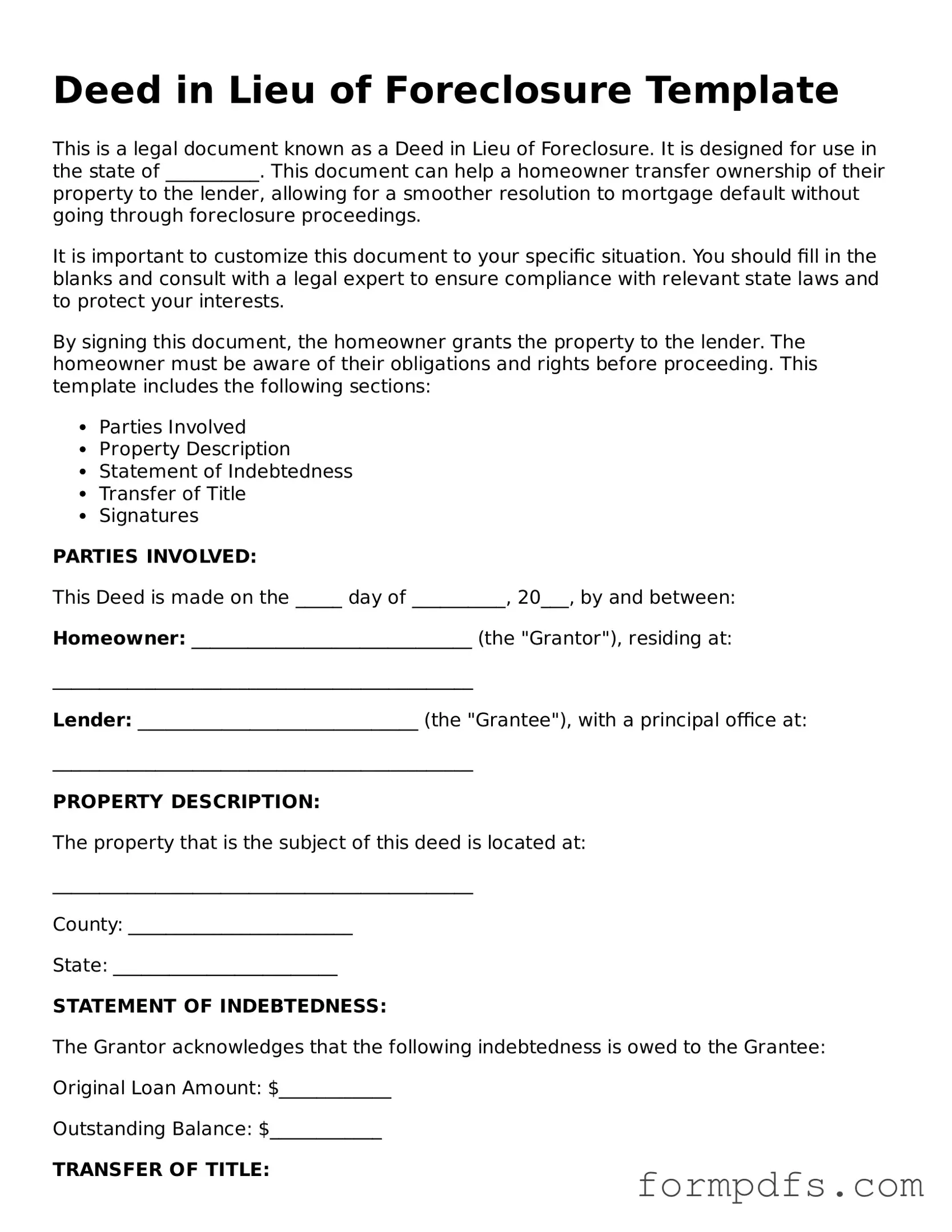What is a Deed in Lieu of Foreclosure?
A Deed in Lieu of Foreclosure is a legal agreement in which a homeowner voluntarily transfers ownership of their property to the lender to avoid foreclosure. This option is typically pursued when the homeowner is unable to keep up with mortgage payments and seeks to mitigate the financial and emotional stress associated with foreclosure. By agreeing to this process, the homeowner can often avoid the lengthy and costly foreclosure proceedings, and it may also have a less severe impact on their credit score compared to a formal foreclosure.
How does the process work?
The process begins when the homeowner contacts their lender to express interest in a Deed in Lieu of Foreclosure. The lender will then evaluate the homeowner's financial situation and the property's value. If both parties agree to proceed, the homeowner will sign a deed that transfers ownership of the property to the lender. It’s essential for homeowners to understand that they may still be responsible for any remaining debt after the property is transferred, depending on the terms negotiated with the lender. Legal advice is often recommended to navigate this process effectively.
What are the benefits of a Deed in Lieu of Foreclosure?
One of the primary benefits is the potential to avoid the lengthy foreclosure process, which can be stressful and damaging to a homeowner's credit. Additionally, a Deed in Lieu of Foreclosure can allow homeowners to walk away from their mortgage obligations more gracefully. In some cases, lenders may agree to forgive any remaining debt, which can provide significant relief. Furthermore, homeowners may be eligible for relocation assistance from the lender, helping them transition to new housing more smoothly.
Are there any drawbacks to consider?
While there are advantages, homeowners should also be aware of the potential drawbacks. A Deed in Lieu of Foreclosure can still negatively impact a homeowner's credit score, although usually less severely than a foreclosure. Additionally, not all lenders accept this option, and some may require the homeowner to demonstrate financial hardship. There can also be tax implications, as the IRS may consider forgiven debt as taxable income. Consulting with a financial advisor or tax professional is wise to understand these factors fully.
Can I still buy another home after a Deed in Lieu of Foreclosure?
Yes, it is possible to purchase another home after completing a Deed in Lieu of Foreclosure, but the timeline and terms may vary. Generally, lenders will consider the impact on your credit score and your overall financial situation. Homebuyers may need to wait a few years before qualifying for a new mortgage, depending on the lender's policies and the specifics of the situation. Rebuilding credit and demonstrating financial stability during this period can significantly enhance chances of securing a new loan in the future.
